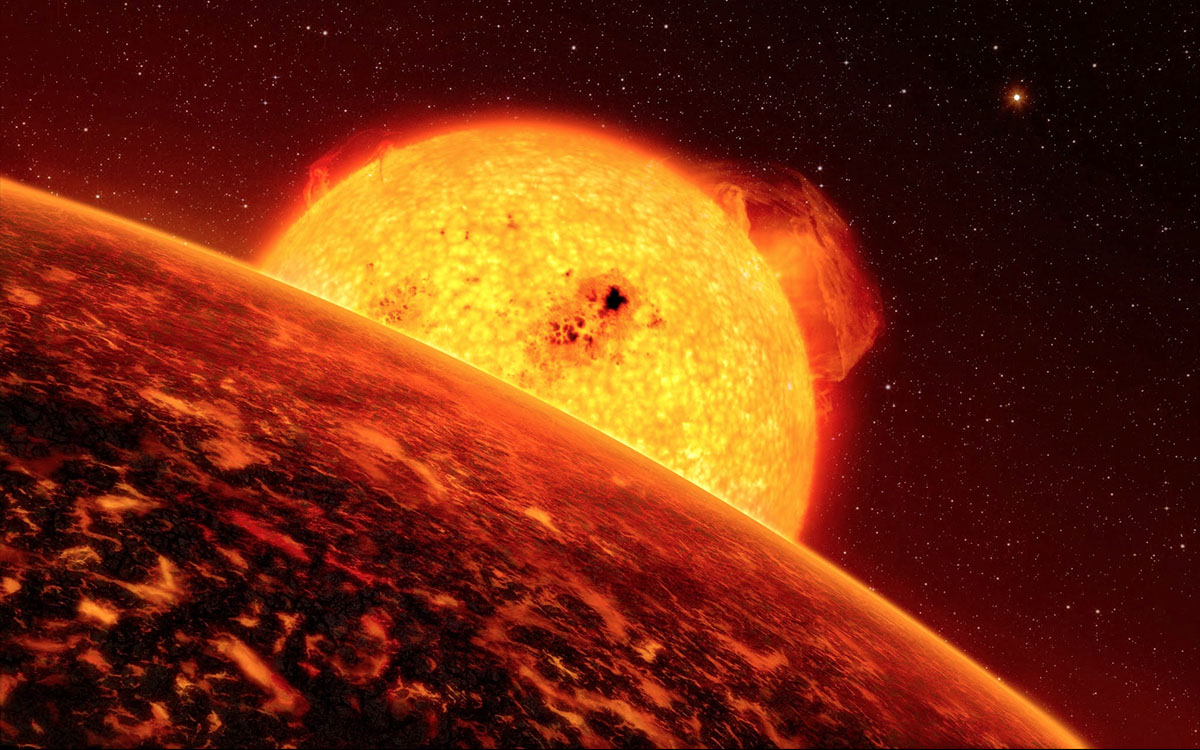hey universe, just try to censor this!

Observing other stars for evidence of extrasolar planets introduced a brand new term into the popular science lingo to describe gas giants orbiting alarmingly close to their home stars; Hot Jupiters. And now there might be a new term to consider if planetary scientists and astronomers can find enough evidence to support a very strange and intriguing hypothesis about COROT-7b. Rather than a super-Earth in close orbit to its parent sun, this world might really be the remains of an ancient gas giant stripped down to its core by millions of years of bombardment by powerful solar winds, and what we see today is actually a naked Hot Jupiter, if you will.
By itself, the fact that COROT-7b is very dense isn’t necessarily a big deal. During planetary formation, metals clump closet to the parent stars and form dense stellar bodies. The resulting exoplanet could easily be 1.7 times as wide as Earth but with a much greater mass on its own. Because it would be orbiting just a million miles away from its sun, the planet would probably be tidally locked and the hemisphere being bombarded by infernal heat is most likely a mass of molten rock with rivers of flowing metal. However, we know that having a gas giant so close to a star isn’t uncommon and this alarming proximity means that the stellar wind basically boils off the Hot Jupiter’s atmosphere. The big question is, what’s left after there’s no more atmosphere for a solar gale to strip away?
According to calculations made earlier this year by the Space Research Institute in Austria, if you were to put a planet the size of Neptune in the same orbit as COROT-7b, it would be stripped down to its rocky core over a period of 500 million years which would then appear as a small, terrestrial world to far away observers. How do we know if this is what happened to the planet in question? Well the tricky part is that we really wouldn’t be sure if any particular planet was really just a core of an ancient gas giant that wandered way too close, but we could try to find how fast the atmospheres of Hot Jupiters are evaporating in very close orbits and see whether the numbers are correct or not. Then we’ll know that the concept is plausible and see if we can come up with new methods of getting more data about extrasolar worlds and tell whether they’re naked gas giants or simply plain old planets orbiting incredibly close to their parent suns.





